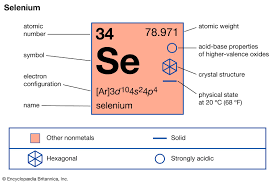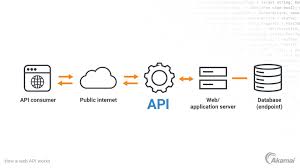Oracle’s commitment to clean energy is not merely aspirational; it’s deeply integrated into their operational strategy, particularly within Oracle Cloud Infrastructure (OCI). Recognizing that data centers are significant energy consumers, Oracle has set ambitious goals and is deploying multi-faceted strategies to achieve them.
Overarching Goals and Progress
Oracle has set clear, aggressive targets to guide its clean energy transition:
-
100% Renewable Energy by 2025: This is arguably their most prominent goal. Oracle aims to power all its global operations, including its extensive network of OCI data centers, with 100% renewable energy by 2025.
- Progress: As of 2023, Oracle achieved 86% renewable energy coverage for Oracle Cloud Infrastructure (OCI) globally. For OCI data centers in Europe and Latin America, they have already reached 100% renewable energy support. This demonstrates significant progress towards their 2025 target. For their Real Estate & Facilities (RE&F) portfolio, they reached 41% renewable energy coverage in 2023.
- Net-Zero Emissions by 2050: This broader target encompasses all Scope 1, 2, and 3 emissions across their entire value chain.
- 50% Reduction in Total Global Emissions by 2030 (relative to a 2020 baseline): This interim target underscores their commitment to substantial emission reductions in the nearer term.
These targets are aligned with the Science Based Targets initiative (SBTi), reflecting a commitment to emissions reductions consistent with the Paris Agreement’s goal of limiting global warming to 1.5°C.
Key Clean Energy Strategies
Oracle employs a combination of strategies to meet its renewable energy and emission reduction goals:
1. Renewable Energy Procurement
Oracle’s primary method for achieving its 100% renewable energy goal is through strategic procurement of clean energy. This involves several approaches:
- Direct Investment in Renewable Energy Projects: While specific public details on direct ownership of large-scale renewable assets can be limited for many tech companies, Oracle’s strategy often involves purchasing energy directly from renewable sources.
- Power Purchase Agreements (PPAs) and Virtual Power Purchase Agreements (VPPAs): These long-term contracts enable Oracle to directly support the development and operation of new renewable energy projects (like wind and solar farms) by committing to purchase their output. This helps bring new clean energy onto the grid, contributing to overall grid decarbonization.
- Renewable Energy Certificates (RECs) / Environmental Attribute Certificates (EACs): Where direct PPAs are not feasible or sufficient, Oracle utilizes high-quality RECs/EACs. These certificates represent the environmental attributes of renewable electricity generated. By purchasing and retiring these certificates, Oracle can claim the corresponding amount of renewable energy consumption, ensuring that the electricity they consume is matched by an equivalent amount of renewable energy added to the grid. This is a common and critical mechanism for large energy consumers to achieve renewable energy targets, especially across diverse global regions with varying energy markets.
- Partnering with Environmentally Conscious Data Center Providers: Oracle often operates its cloud regions within co-location data centers. They selectively partner with providers who share their commitment to sustainability and can offer facilities already powered by renewable energy or with clear paths to achieving it. This extends their reach and accelerates their clean energy transition in regions where direct procurement might be complex.
- Leveraging Local Grids and Utility Programs: In regions where utilities offer “green tariffs” or specific renewable energy programs, Oracle actively participates to maximize its clean energy uptake. This involves working with regional providers to ensure power comes from clean sources aligned with local energy grids and environmental goals.
2. Data Center Energy Efficiency
Beyond sourcing clean energy, a crucial part of Oracle’s strategy is to minimize the total energy demand of its data centers. This is achieved through a combination of cutting-edge design, operational optimization, and advanced technologies:
- Modular Data Center Design: Oracle has adopted a modular approach to data center construction. This allows for phased build-outs, enabling the company to integrate the newest, most energy-efficient technologies as they become available. This “pay-as-you-go” growth model helps maintain optimal efficiency over time, avoiding the lock-in of older, less efficient designs.
-
Advanced Cooling Technologies: Cooling is one of the largest energy drains in any data center. Oracle employs sophisticated cooling systems designed to minimize energy consumption:
- Free Cooling (Outside Air Utilization): Wherever climate permits, Oracle utilizes outside air for cooling, significantly reducing the need for mechanical refrigeration.
- Closed-Loop Water Cooling Systems: When additional cooling is required, Oracle uses sealed, closed-loop water systems that recycle water, minimizing water waste. This stands in contrast to older systems that might involve more significant water evaporation or discharge.
- Optimized Airflow Management: Data center layouts are meticulously designed to ensure efficient airflow, preventing hot spots and optimizing the distribution of cool air to IT equipment. This includes hot aisle/cold aisle containment, blanking panels, and strategic placement of equipment.
- High Utilization Rates: A core principle of cloud computing’s sustainability advantage is resource consolidation and high utilization. By running multiple customer workloads on shared infrastructure, Oracle can achieve much higher server utilization rates than individual on-premises data centers. This “do more with less” approach inherently reduces the overall energy required per unit of computing.
-
Intelligent Power Management and AI/ML:
- Real-time Monitoring and Optimization: Oracle leverages its own analytics and AI/ML capabilities to continuously monitor energy consumption across its data centers. This real-time data allows for immediate adjustments and optimizations to power usage.
- Workload Management: AI can intelligently manage and distribute workloads across servers and data centers to optimize energy efficiency, for example, by consolidating workloads during off-peak hours or routing traffic to regions with lower carbon intensity grids.
- Predictive Analytics: By analyzing historical data and predicting future energy requirements, Oracle can make informed decisions about energy use, further improving efficiency and reducing waste.
- Energy-Efficient Hardware: Oracle’s engineers design and select hardware components with energy efficiency in mind. This includes optimizing power supplies, processors, and memory to deliver maximum performance with minimal energy draw. They also assess product characteristics like dematerialization (using fewer materials), serviceability, and recyclability.
- Power Usage Effectiveness (PUE) Targets: Oracle continually strives for industry-leading Power Usage Effectiveness (PUE) ratios. PUE is a metric that indicates how efficiently a data center uses energy; a PUE of 1.0 is ideal (meaning all energy goes to IT equipment). Oracle has achieved PUEs as low as 1.15 in some facilities, which is exceptionally efficient for the industry.
3. Circular Economy Principles in Hardware Management
Oracle extends its sustainability commitment to the entire lifecycle of its hardware, embracing circular economy principles:
- Hardware Take-back and Recycling Programs: Oracle has robust programs to collect and manage retired hardware assets from its own data centers and from customers. In fiscal year 2022, they collected 3 million pounds of retired hardware assets, with an impressive 99.9% being reused or recycled. This significantly reduces e-waste sent to landfills.
- Design for the Environment (DfE): Oracle’s product designers work to a set of guidelines that assess environmental impacts throughout the hardware lifecycle, from manufacturing to end-of-life. This includes efforts to increase the use of recycled materials (e.g., a 15-fold increase in reground plastics for server parts in one instance).
- Component Reuse and Remanufacturing: Where possible, components are harvested from retired equipment for reuse or remanufacturing, extending their useful life.
The “Clean Cloud” Advantage for Customers
Oracle emphasizes that its commitment to clean energy and efficient operations directly benefits its customers. By migrating to Oracle Cloud Infrastructure (OCI), customers can significantly reduce their own environmental footprint. This is because:
- Consolidation and Optimization: Customers no longer need to manage their own energy-intensive on-premises data centers. By leveraging Oracle’s highly optimized and consolidated cloud infrastructure, they benefit from economies of scale and Oracle’s advanced efficiency measures.
- Access to Renewable Energy: When a customer’s workload runs on OCI, it benefits from Oracle’s progress towards 100% renewable energy, effectively making their own cloud usage “cleaner.”
- Reduced Scope 1 and 2 Emissions: For customers, moving to the cloud can lead to a drastic reduction in their Scope 1 (direct) and Scope 2 (indirect from purchased electricity) emissions, as these are absorbed by the cloud provider’s environmental performance. Studies have shown significant GHG emission reductions (e.g., a 93% decrease in GHG emissions identified in one use case when migrating from on-prem to Oracle Clean Cloud).
Challenges and the Path Forward
While Oracle has made substantial progress, the journey to full sustainability is ongoing. Challenges include:
- Global Grid Variability: Sourcing 100% renewable energy globally is complex due to varying energy markets, regulations, and renewable energy availability in different regions. Oracle actively works to overcome this by using a diverse set of procurement methods.
- Increasing Demand for Cloud Services: The rapid growth of cloud computing, particularly with the rise of AI and machine learning workloads which are very compute-intensive, means that total energy demand is increasing. This requires continuous innovation in efficiency and aggressive expansion of renewable energy procurement.
- Supply Chain Emissions (Scope 3): Reducing emissions across the entire supply chain (Scope 3) is a significant undertaking, requiring extensive collaboration with suppliers to ensure they also adopt sustainable practices and set their own emission reduction targets. Oracle aims for 100% of its key suppliers to have environmental programs in place by 2025.




